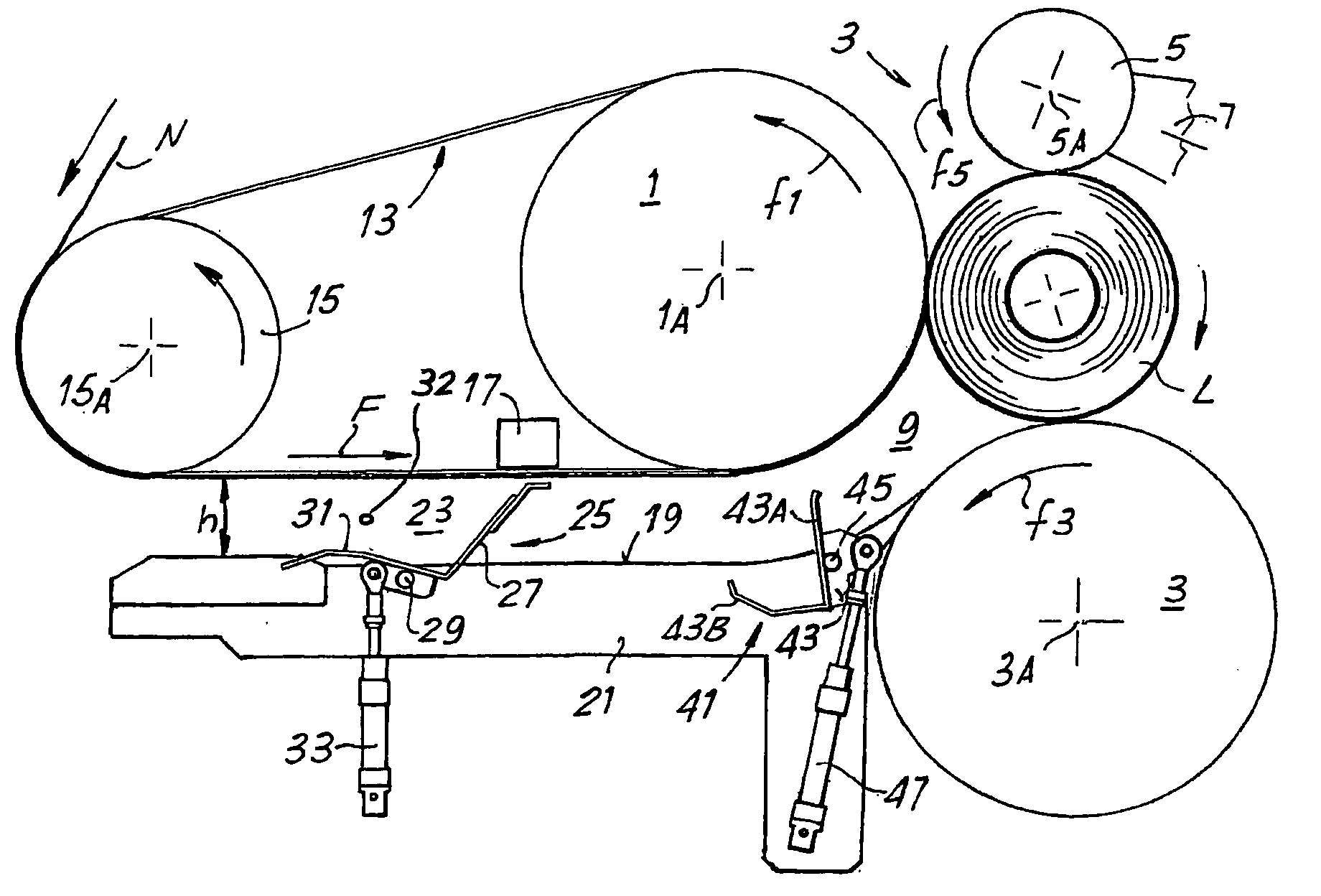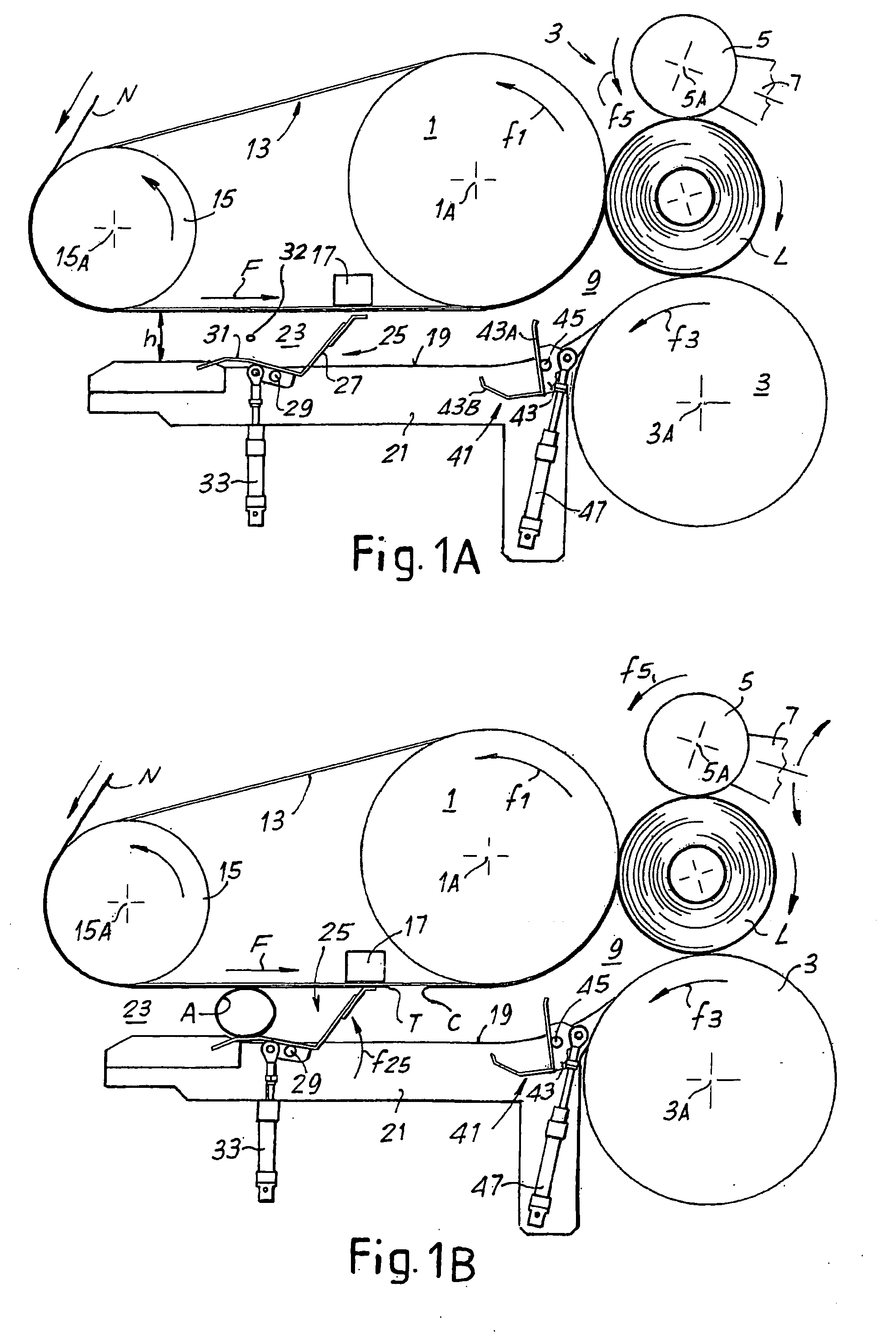Method and Machine for Forming Logs of Web Material, with a Mechanical Device for Forming the Initial Turn of the Logs
- Summary
- Abstract
- Description
- Claims
- Application Information
AI Technical Summary
Benefits of technology
Problems solved by technology
Method used
Image
Examples
Embodiment Construction
[0053]The accompanying figures show the members of the rewinding machine in different embodiments of the invention, limited to those parts of the machine that are necessary in order to understand the principle on which the invention is based. Other parts of the machine can be designed in a manner known per se to those skilled in the art and, for example, in particular as described in the publications mentioned in the introductory part of this description, the content of which is fully incorporated herein. More specifically, the operating sequence illustrated in the figures of the drawing show the members of the winding head, i.e. those members used to feed the web material and to insert the cores, as well as to sequentially form the individual logs of web material around the respective tubular cores.
[0054]With initial reference to FIGS. 1A to 1F, 3 and 4, the rewinding machine, indicated as a whole with 1, comprises a winding unit 3 including: a first winding roller 1 rotating in th...
PUM
 Login to View More
Login to View More Abstract
Description
Claims
Application Information
 Login to View More
Login to View More - R&D
- Intellectual Property
- Life Sciences
- Materials
- Tech Scout
- Unparalleled Data Quality
- Higher Quality Content
- 60% Fewer Hallucinations
Browse by: Latest US Patents, China's latest patents, Technical Efficacy Thesaurus, Application Domain, Technology Topic, Popular Technical Reports.
© 2025 PatSnap. All rights reserved.Legal|Privacy policy|Modern Slavery Act Transparency Statement|Sitemap|About US| Contact US: help@patsnap.com



